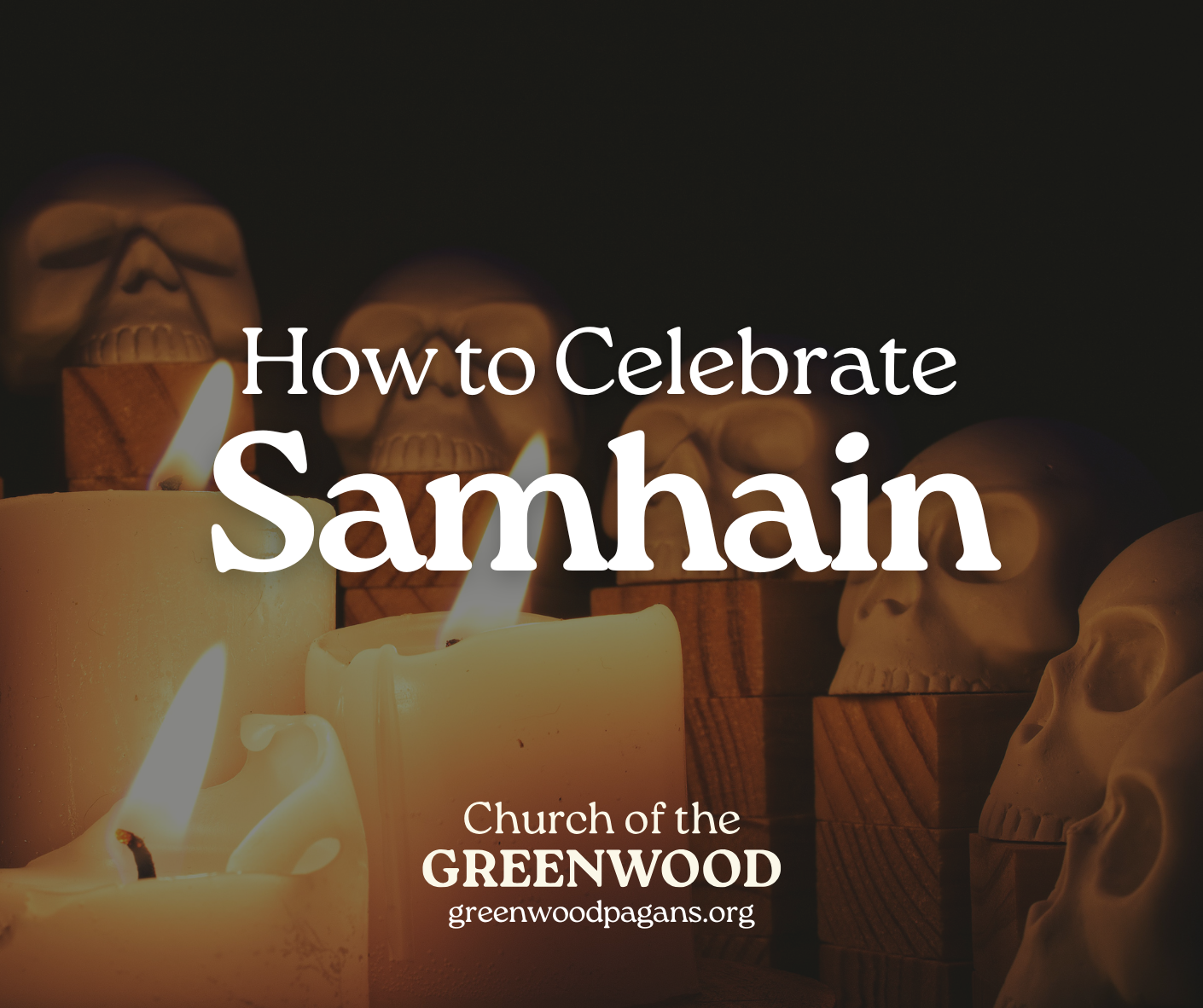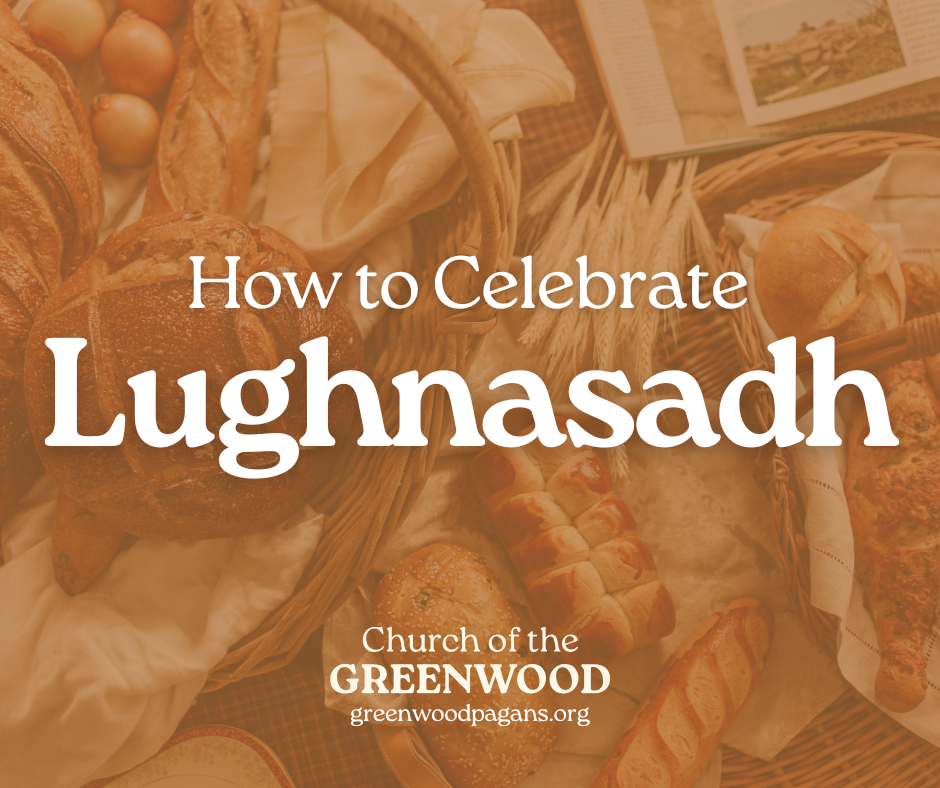Samhain | How to Celebrate
The nights are longer; there is a chill in the air. As the wind whistles through the trees, the leaves spiral to the ground. Samhain is liminal halfway between Autumn Equinox and Winter Solstice. Gardens are prepped for winter as dying crops are harvested and removed, while trees, bulbs, and spring blooming flowers are planted as a promise of the returning sun.
Samhain (pronounced sah-wen), the final harvest of the growing season, translates to summer’s end in the Irish language. For most traditions, in the Northern Hemisphere, Samhain takes place from Oct. 31 to Nov. 1. The astronomical cross quarter day for Samhain this year falls on Nov. 7. In the Southern Hemisphere, our friends celebrate Bealtaine on these dates.
Below, learn how different cultures choose to honor life and death at this time of the year, and see how many Pagans choose to observe the sabbat.
Common Themes Among Different Traditions
Whatever path you follow, or culture you originate from, we all have holidays to honor those who have gone before us. Throughout many cultures, there is a recurring theme at this time of year of life, death and connecting with the Otherworld.
Within Celtic tradition, Samhain and Bealtaine are regarded as the periods of greatest significance for magical practices. Time loses its distinction, merging past and future into a single alternate timeline. In the past, it was believed that beings such as the dead, fairies, ghosts, demons and witches emerged from the underworld. People lit bonfires to keep evil spirits at bay. To ward against the unwelcome spirits throughout the winter, they carried torches around their homes and property.
In Scotland, Samhain was known as The Witches’ Sabbat or the Ban-Druidh. This is when the witches of Scotland gathered to celebrate, prophesize and cast spells. In Scottish folklore, it is said that witches were seen flying through the air on broomsticks, or riding on the backs of black cats, ravens or horses. People who lived in rural areas were often afraid to leave their homes for fear that the Celtic Fae Queen, the Morrigan, would bring them into the Otherworld, or the Scottish Callieach, the blue faced hag of winter, would take them away.
Although Samhain is specifically a Celtic holiday, people who practice Norse Paganism have a similar festival called Vetrnætr. Like Samhain, this festival marks the end of the harvest season and the beginning of winter, and includes rituals to honor their ancestors as well as protect their households for the winter.
At this time of year Christians honor the dead on Nov. 1 as All Saints Day, and Nov. 2 as All Souls Day.
In Latin America, in particular Mexico, el Día de los Muertos (Day of the Dead), is celebrated on Nov. 1 and 2. Dating back 3,000 years, it is on this day that the gates of heaven open, allowing the spirit of loving ancestors to be reunited with the family members on Earth who still grieve for them.
Celebrate Like a Pagan
Wheel of the Year Observance and Ritual
For many Pagans, the Wheel of the Year signifies the greater cycle of life, death and rebirth. As the wheel turns, they take time to observe each new sabbat with a timely ritual.
Samhain is a fitting time to reflect on our lives, look back over the past year, and identify the habits we would like to die in order to make room for new patterns to blossom when the growing season begins.
During Samhain, the Horned God or God of the Wild Hunt descends into the Underworld, leaving Earth to the darkness of winter. Wiccans say farewell to the God at this Sabbat, honoring him for sustaining his people over the past year with bountiful harvests, and keeping faith that he will return to be reborn at Yule.
Ancestors Supper
Holding an ancestors supper or dumb supper for Samhain is common in the Celtic tradition. The supper was called "dumb" because it occurred in total silence. One place was set at the head of the table for the ancestors who were attending the supper. Food and drink were served at this honored seat. The superstition was that if anyone looked directly at this space to attempt to see the dead, they would suffer misfortune.
Upon conclusion of the meal, the untouched plate and cup were placed outdoors, intended for the “pookas,” shape-shifting mythical beings from Irish folklore commonly represented as mischievous goblins or spirits. It was felt that this spirit could take many forms including a black horse, goat or dog. In other traditions, this ancestor’s supper was used to honor and toast the dead, and attempt to communicate with our ancestors while the veil is thin.
Immortality
Do not stand
By my grave, and weep.
I am not there,
I do not sleep—
I am the thousand winds that blow
I am the diamond glints in snow
I am the sunlight on ripened grain,
I am the gentle, autumn rain.
As you awake with morning's hush,
I am the swift, up-flinging rush
Of quiet birds in circling flight,
I am the day transcending night.
Do not stand
By my grave, and cry—
I am not there,
I did not die.— Clare Harner, The Gypsy, December 1934
Ancestors Altar
An ancestors altar often includes photos, personal items that belong to ones ancestors, candles and incense. People often leave offerings of food and drink to their loved ones as well.
Storytelling and Oral Tradition
Sharing stories or anecdotes about our ancestor’s past and lives, how they lived, worked, struggled and triumphed is how many cultures pass down knowledge about their ancestral lineage and heritage.
In many Indigenous groups, it's common practice for their people to connect with their ancestors by connecting to their land. They tell stories about their history and specific territories rooted in the land they live on.
Divination
With the thinning of the veil, many Pagan cultures see Samhain as a time for prophecy. Different divination techniques can be utilized such as tarot cards, scrying and dousing to communicate through the veil.
Ghost Stories and Folklore
Similar to sharing stories about ones ancestry, others like to tell ghost stories and share folklore from their traditions or from the land they reside upon. Here are a few local stories from Central New York you might explore this Samhain:
The story of the Fox Sisters is a famous piece of American folklore that gave birth to the Spiritualism movement in the mid-19th century. It began in 1848 as a childish prank but escalated into a nationwide phenomenon, ending with public confessions of fraud.
13 Curves Cedarvale Road in Syracuse, N.Y. A bride is said to haunt Cedarvale Road after she and her groom died in a car crash on their wedding night. Driving through the curves and flashing headlights 13 times is said to make the ghost appear.
Split Rock Quarry in Syracuse, N.Y. Spilt Rock was a munitions plant that exploded in 1918, killing over 50 men. The site is reputedly haunted by the ghosts of workers from this plant who lost their lives in the explosion. Visitors have reported hearing footsteps, disembodied voices and a mineshaft that warps time.
As we enter the winter season, the dark part of the year, remember to take care of yourselves, nourish yourself with healthy food and take time to feed your spirit.
Dark blessings to you all,
Rev. Sherene
Sources
Chamberlin, Lisa (2017) WICCA Wheel of The Year Magic.
Cook, Fiona and Roux, Jessica (2023) The Wheel of the Year, An Illustrated Guide to Nature’s Rhythms, Kansas City, Missouri, Andrews McMeel Publishing.
Explore the Folklore of Central New York | Visit Central NY
Druidry.org Samhain/Samhuinn – Rituals and Traditions
Shanddaromon, (2006), Living Paganism, Franklin Lakes, NJ, New Page Books.



